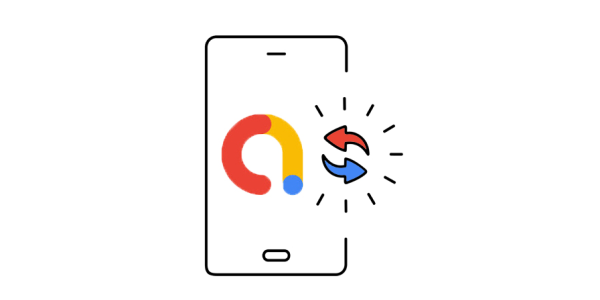Maximizing ROI: Voodoo’s Ad Strategies for Mid-Core and Puzzle Player Acquisition and Monetization

In this Monetization Masterclass, we sit down with Baptiste Durif, Head of Ad Monetization at Voodoo, to delve into the art and science of scaling mid-core and puzzle games. Baptiste reveals how Voodoo harnesses the power of ad networks and creative optimization to acquire high-value players, while fine-tuning monetization strategies that seamlessly blend into gameplay. From leveraging data-driven insights on CPI, LTV, and ROAS to striking the perfect balance between ad revenue and player retention, Baptiste offers a behind-the-scenes look at how Voodoo transforms smart ad placements into sustainable growth.
What are the most effective channels and strategies for acquiring mid-core/puzzle players? How does Voodoo Games measure the ROI of these channels?
At Voodoo, we primarily use ad networks (such as AppLovin or Unity) to acquire mid-core and puzzle players, similar to our approach in the hypercasual gaming space. These ad networks allow us to efficiently reach a wide audience and target users who are likely to engage with our games We focus on creating compelling ad creatives - like videos and playable demos - that showcase our games' features and gameplay. By distributing these ads through various ad networks across multiple apps and platforms, we attract players who have an interest in mid-core and puzzle genres.
To measure the ROI of these channels, we track the following key performance metrics:
- Cost Per Install (CPI): the average cost to acquire a user from each ad network
- Lifetime Value (LTV): the revenue generated by users acquired through each channel over time
- Retention Rates: how frequently and for how long do these users continue to play our games
- Return on Ad Spend (ROAS): the revenue earned for every dollar spent on advertising
By analyzing these metrics, we determine which ad networks deliver the most valuable players. This data-driven approach allows us to optimize our marketing spend, focus on the most effective channels, and ensure we're acquiring users who contribute to the long-term success of our games.
What is your strategy for placing ads within mid-core/puzzle games? How do you balance user experience with ad revenue?
Our strategy for placing ads within mid-core and puzzle games is to integrate them seamlessly into the gameplay. We've found that when ads are well-integrated by design, they contribute significantly to a game's growth, user base expansion, and revenue generation. By ensuring that ads enhance rather than disrupt the gaming experience, we strike a balance between user satisfaction and monetization.
For instance, we prioritize ad formats like rewarded videos, where players can choose to watch an ad in exchange for in-game benefits. This not only provides value to the player but also increases engagement with the ad content. While immersive and in-game advertising holds potential, we've observed that it hasn't scaled effectively yet. Without proper mediation, these formats may not achieve the scalability we require.
To continually refine our approach, we run constant A/B tests across our games. In fact, we develop around 1,000 prototypes each year to explore a wide array of concepts. This extensive testing allows us to understand what works best for our players and how we can optimize ad placements without compromising the user experience. By being meticulous and data-driven, we ensure that our monetization strategies support both our players' enjoyment and our business goals.
Which ad formats perform best in mid-core/puzzle games? How do you determine the optimal ad load for these games?
In mid-core and puzzle games, rewarded video ads perform exceptionally well for us at Voodoo. These ads offer players valuable in-game benefits - like extra lives or power-ups - in exchange for watching a short video. This format integrates seamlessly into the gameplay, enhancing the user experience rather than disrupting it.
While immersive and in-game advertising holds promise, it's not yet scalable to the level we require. Without effective mediation, these formats haven't delivered the impact we're aiming for.
We've noticed that when ads are thoughtfully integrated by design, the games tend to excel in growth, user base expansion, and revenue. This approach not only increases player engagement but also fosters longer retention periods. While other formats like interstitial or banner ads have their place, they often interrupt the flow of the game, which can detract from the overall player experience. To determine the optimal ad load, we engage in constant A/B testing for each of the 1,000 prototypes that we develop each year. Through these extensive tests, we analyze how different ad frequencies and placements affect player engagement and retention. Key metrics such as session length, player drop-off rates, and in-game purchases are closely monitored.
How do you measure the impact of ad revenue on player retention and engagement in mid-core/puzzle games?
We measure the impact of ad revenue on player retention and engagement in our mid-core and puzzle games by conducting extensive A/B testing and analyzing key performance metrics. This approach allows us to understand how different ad implementations affect player behavior and to balance engagement with increased monetization.
By analyzing metrics for each AB test such as retention rates, session length, or IAP spending, we can identify patterns and correlations. For example, if increasing the number of opportunities to watch a rewarded video leads to longer session times without affecting retention negatively, we might consider that a positive adjustment. Conversely, if we notice that a particular ad placement causes a spike in player drop-off rates, we'll reevaluate that strategy.
How do you balance challenging puzzle design with player retention in mid-core/puzzle games? What metrics do you use to measure puzzle difficulty?
We aim to craft puzzle games that are engaging and stimulating without crossing into frustration territory. To achieve this, we implement a progressive difficulty curve, starting with simpler levels that help players grasp the mechanics, and gradually increasing complexity to maintain interest and provide a satisfying challenge.
We measure puzzle difficulty and its impact on player retention by closely analyzing player behavior within the game. For instance, we monitor level completion rates to identify if a particular stage is causing players to drop off. A sudden decrease in the number of players advancing past a certain level can indicate that it's too difficult and may need adjustment.
Additionally, we observe how many attempts players make before completing a level. If we notice that players are repeatedly failing and not progressing, it suggests the level might be overly challenging. We also track session lengths and how frequently players return to the game. A decline in these areas can signal that players are becoming disengaged due to difficulty spikes.
To fine-tune the balance between challenge and enjoyment, we engage in extensive A/B testing across the numerous prototypes we develop each year. By experimenting with different puzzle designs and difficulty settings, we gather data on how these variations affect player engagement and retention. This iterative process allows us to adjust our games constantly, ensuring that puzzles remain compelling but fair, keeping players motivated to continue without feeling discouraged.
What is Voodoo’s overall ad monetization strategy? How does it differ across different game genres?
At Voodoo, our ad monetization strategy is customized for each game genre (hypercasual, mid-core, and puzzle games) to optimize revenue while enhancing the player experience.
In our hyper-casual games, which are our legacy titles, we rely heavily on frequent ads like interstitials and banner ads. These games attract high user volumes with simple, engaging gameplay. Players are generally accepting of more frequent ad placements because sessions are short, and the ads don't significantly disrupt their experience.
For mid-core games, we focus on integrating rewarded video ads that offer optional in-game benefits - such as extra lives or power-ups- in exchange for watching an ad. This approach enhances the gameplay without interrupting immersion, maintaining the deeper engagement and longer session times that mid-core players expect.
In our puzzle games, we use rewarded video ads thoughtfully to aid player progression. Ads are offered at strategic moments, providing hints or solutions in exchange for viewing an ad. This ensures that ads contribute positively to the player experience, helping to keep players engaged without disrupting the flow of the game.
How important are ad network partnerships to Voodoo's success? What criteria do you use to select ad network partners?
Ad network partnerships are important to our monetization strategy at Voodoo, and we're very selective about who we choose to work with. Our foremost concern is preserving a seamless user experience. That means we ensure ads don't disrupt gameplay—they shouldn't contain inappropriate content, use intrusive templates, or make it difficult for players to exit the ad smoothly. We know that any frustration here can negatively impact how players feel about our games.
The network's performance and revenue potential are of course also paramount; we look for partners that consistently provide high eCPMs and strong fill rates.
We also place a high priority on the technical reliability of our partners' SDKs. It's crucial that integrating these SDKs doesn't lead to crashes or create technical debt that could slow down our development process or affect game performance. Stability and ease of integration are essential for us to maintain the quality of our games.
Data privacy compliance is another critical factor in our selection process. We only partner with ad networks that strictly adhere to data protection regulations, ensuring that our users' personal information is always safeguarded. This isn't just about legal compliance; it's about maintaining the trust our players place in us.











